Even the most sublime yogic states—Videha and Prakriti-laya—are revealed to be subtle forms of bondage in Patanjali’s Yoga Sutra. This blog explores how these states, while appearing like liberation, still bind the yogi through attachment. It introduces three authentic post-death paths—Sadyo-mukti, Krama-mukti, and Avatāra—and explains the deeper role of Viveka-khyāti and Bhava-pratyaya.
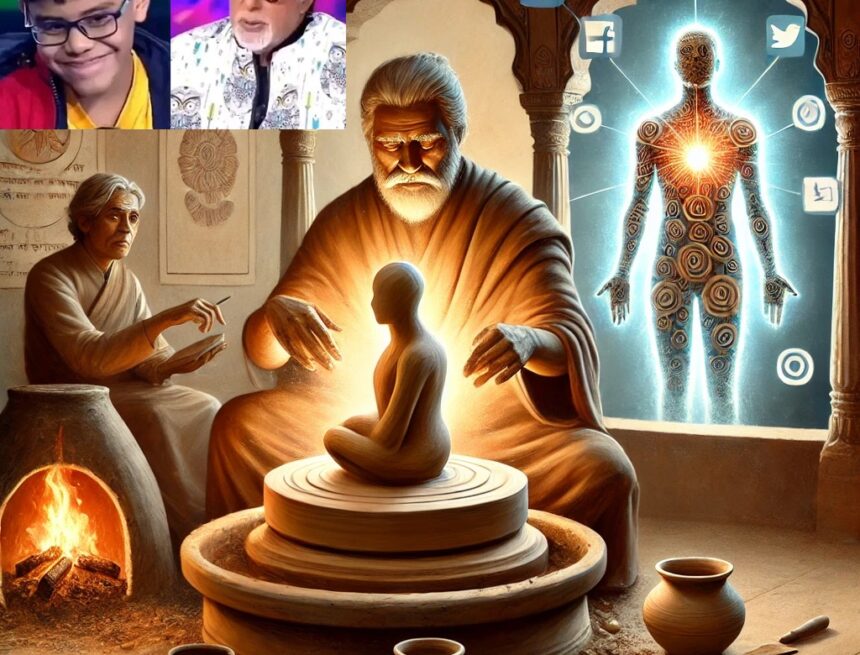
KBC Guru to Guide: Not Just a Teacher
When the Guru became a teacher, and the teacher a tutor, the sacred science of human construction collapsed into content delivery. This blog analyzes how ancient traditions shaped character with friction and force, while modern systems fear discipline. The guru was a potter — today’s tutor is a performer. The result? Bricks without buildings.

Patanjali Yoga Sutra Terms Explained: Understanding Yoga Sutra Terms-II
This expanded glossary completes the essential vocabulary needed to fully understand Patanjali’s Yoga Sutra, especially the profound teachings of 1.18–1.19. Covering advanced sadhana, post-death paths, psychological pitfalls, and subtle distinctions, it clarifies how abhyasa, vairagya, samskaras, and liberation processes interconnect—revealing the entire spectrum from effort to Kaivalya.

Patanjali Yoga Sutra Glossary: Understanding Yoga Sutra Terms-I
Struggling with complex Sanskrit in the Yoga Sutras? This glossary simplifies 36 key terms from Patanjali’s Yoga Sutras 1.18–1.19, focusing on Samadhi, samskaras, kleshas, and Sankhya philosophy. Gain clarity on Nirbija, Viveka-khyati, and Purusha-Prakriti to unlock Asamprajnata Samadhi and deepen your spiritual understanding. Ideal companion for beginners and advanced yoga practitioners alike.

Rigvedic War-Host: The Maruts as Divine Shock Troops
The Rigvedic hymn 1.64 presents the Maruts as a unified storm-host embodying the protective power of ṛta. Far from mere poetic embellishment, traditional and modern commentaries show the Maruts functioning as guardians of order who remove obstacles, strengthen communities, support rightful authority, and provide the inner resilience needed for civilizational continuity and collective defense.

Practice of Para Vairagya – Yoga Sutra
Patanjali’s Yoga Sutra 1.18 reveals the Practice of Para Vairagya—the supreme detachment that leads the yogi beyond all cognition into Asamprajnata Samadhi. Through Neti-Neti and repeated practice, the mind’s fluctuations cease, leaving only the subtle impressions of stillness. This process culminates in freedom, where consciousness rests in its own radiant nature.
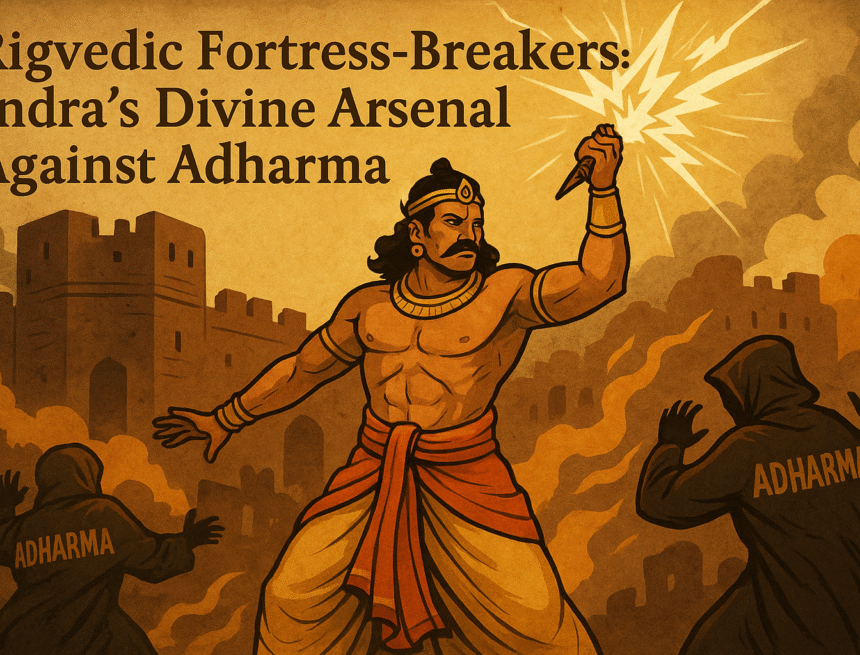
Rigvedic Fortress-Breakers: Indra’s Divine Arsenal Against Adharma 1.63
Rigvedic Fortress-Breakers reveal Indra’s battlefield doctrine — the divine authorization for self-defence rooted in Vedic dharma. Hymns 1.63.2–1.63.7 depict fortress-breaking, slaying of Dasyus, and divine protection for kings and sacrificers. Far from metaphor, these verses establish a Vedic right to resist annihilation and preserve sacred civilization against Adharmic conquest.
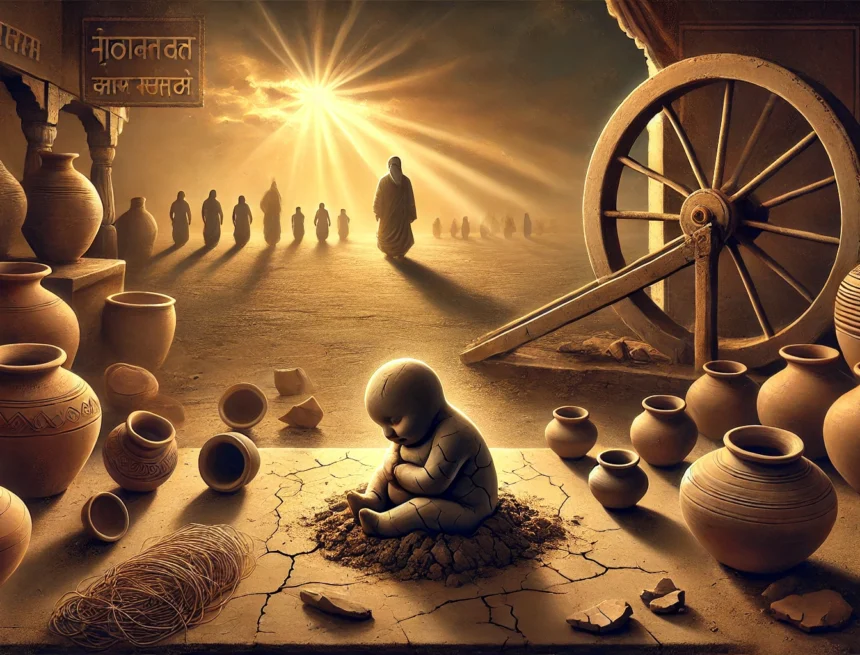
Manufacturing Defect: When Humans Stopped Making Humans
Modern society celebrates intelligence but ignores humility and discipline—creating incomplete humans. This blog exposes the “manufacturing defect” in parenting and education where children are treated like finished pots before being fired in life’s furnace. Drawing from Hindu wisdom—tapa, danda, and the guru’s authority—it calls for restoring the lost art of manufacturing strong, responsible, compassionate human beings.

Beyond Cognitive Samadhi: Understanding Asamprajnata Samadhi
Asamprajnata Samadhi, described in Patanjali’s Yoga Sutra 1.18, is the transcendence of even the most refined meditative cognition. Through Para Vairagya—supreme detachment—every mental modification ceases, leaving only subtle impressions of cessation (Saṁskāra-Śeṣa). It marks a categorical shift from knowing to being, where pure consciousness abides in its own nature, beyond all thought.

Cultural Genocide by British: India’s Civilizational Soul Destroyed
British rule in India was more than economic exploitation—it was cultural genocide. Through Macaulay’s education policy, caste codification, missionary propaganda, and historical distortion, the British dismantled India’s civilizational memory. This blog uncovers how they replaced Gurukuls with colonial schools, suppressed Ayurveda, and divided society—leaving a legacy of mental colonization that still lingers.
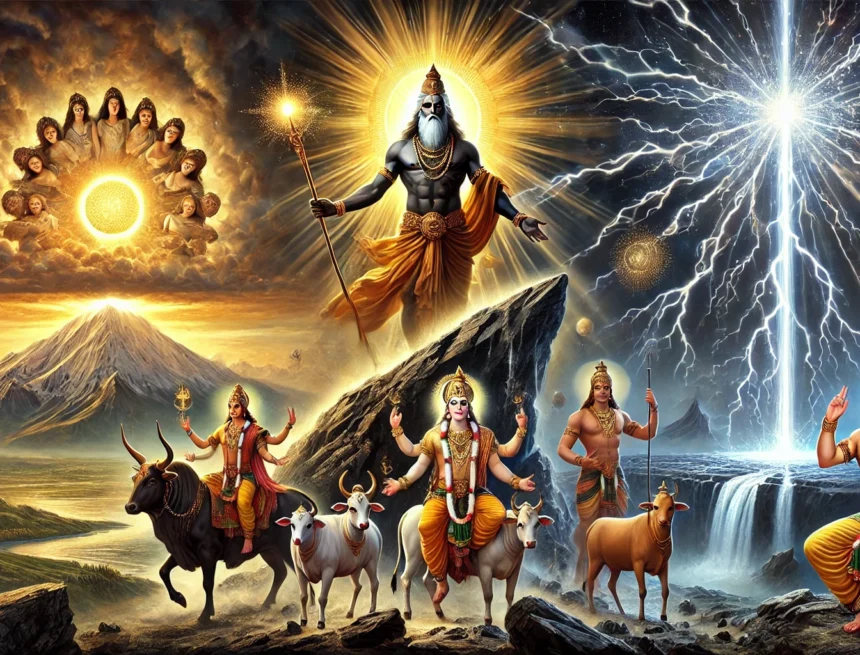
Rigvedic Liberation of Light: When the Rock of Darkness Was Broken RV 1.62
The Rigvedic Liberation of Light interprets Rigveda 1.62.3–5 as the cosmic journey from ignorance to illumination. Bṛhaspati’s wisdom, Indra’s thunder, and Dawn’s radiance form a triad—revelation, liberation, illumination. Each hymn transforms protection into awakening, showing that the Veda’s ancient chants remain a living defense of truth, order, and spiritual clarity.

British Loot and Industrialize: How India Funded Britain’s Rise
Britain’s Industrial Revolution didn’t emerge from innovation alone—it was bankrolled by India’s wealth. From Bengal’s Diwani revenues to opium trade and cotton extraction, British industry rose on Indian poverty. This blog exposes the $45 trillion drain that built modern Britain while deindustrializing Bharat—an economic heist masked as civilization.

Future Vision: Path of the Coming Century
The RSS Centenary Sankalp Patra outlines a Future Vision for the next century, balancing tradition and modernity. From institutional growth and social transformation to global leadership, diaspora roles, AI ethics, education, Ayurveda, and cultural revival, the roadmap emphasizes dharma-based life, harmony, and world welfare. It envisions India as a moral, cultural, and spiritual guide.

Vasudhaiva Kutumbakam: Indian Vision for Global Welfare
The RSS centenary Sankalp Patra reaffirms Vasudhaiva Kutumbakam: the whole world as one family. From spiritual roots in Sanatana Dharma to practical visions for peace, justice, environment, economy, and culture, this vision contrasts with Western globalization by emphasizing harmony, cooperation, and universal brotherhood. It is not dominance, but India’s civilizational duty of sharing.

Bengal Famine and British Genocides: How Colonial Policies Killed Millions
Between 1765 and 1947, British rule caused twelve major famines that killed an estimated 30–60 million Indians. These were not natural calamities but deliberate policy outcomes—tax rigidity, grain exports, and racist governance that turned droughts into genocides. The blog exposes how colonial profit replaced compassion, making famine Britain’s deadliest legacy in India.
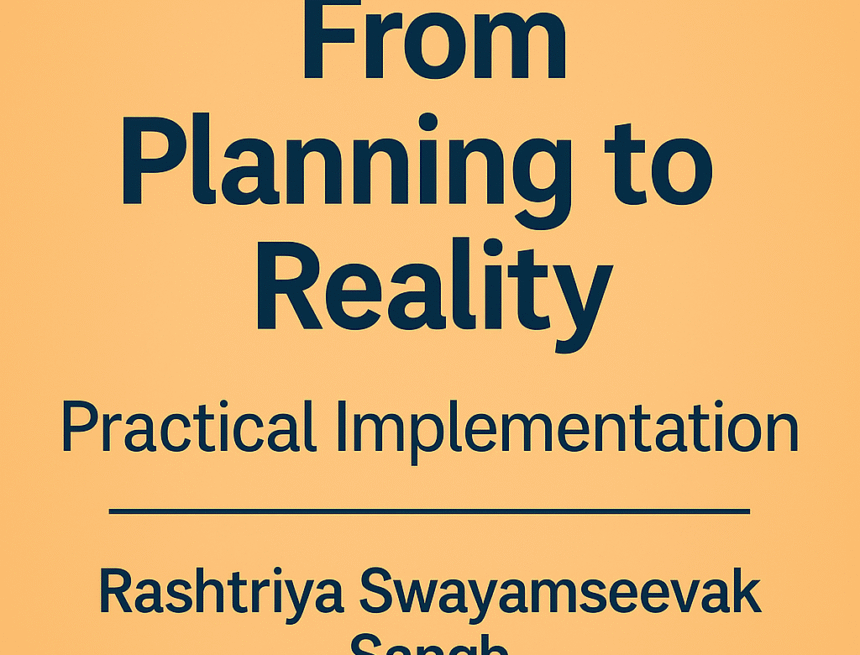
From Planning to Reality: RSS’ Practical Implementation
The blog From Planning to Reality: Practical Implementation explores how the Rashtriya Swayamsevak Sangh translates resolutions into action. It covers branch expansion, training, leadership development, institutional building, harmony, and technology, showing how clarity, discipline, and evaluation transform vision into tangible social change. This journey reflects the Sangh’s century-long experience of turning commitments into reality.

British Stole Indian Treasures: Colonial Plunder and Cultural Genocide
Britain’s colonial conquest of India was not only political but civilizational. Millions in wealth, sacred art, and knowledge were stripped from Bharat—Tipu Sultan’s treasures, Amaravati Marbles, Kohinoor Diamond, and ancient manuscripts now fill British museums. This plunder erased India’s cultural memory and redefined its heritage as imperial trophies—a crime whose echoes still resonate today.
From Struggle to Solution: Facing Modern Challenges
Modern challenges span from information wars and judicial bias to environmental crises and cultural disintegration. The RSS centenary declaration reaffirms that solutions must rest on dharmic strength and national unity. By combining adaptation, innovation, and cooperation, Bharat can move from struggle to solution while offering the world a vision of harmony and resilience.

Economy in British Raj: The Systematic Drain of Indian Wealth
From 1765 onward, the Economy in British Raj was engineered for extraction. Through revenue systems, trade monopolies, and financial manipulation, Britain drained India’s wealth to fund its industrial rise. This blog unpacks how taxation, deindustrialization, and currency control turned a flourishing civilization into a colony that paid for its own subjugation — the greatest economic heist in history.
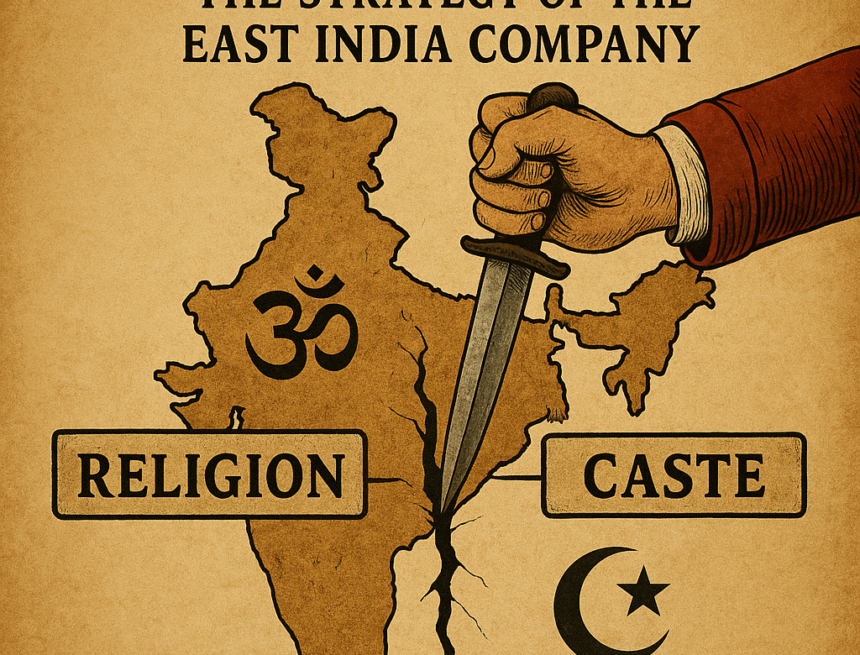
Divide and Rule by East India Company
The British didn’t conquer India by force alone—they conquered it through division. Divide and Rule by East India Company reveals how religion, caste, region, and class were systematically weaponized to keep Bharat fragmented. From Plassey to Partition, it exposes how a civilizational mosaic was turned into a map of conflict and dependency.


